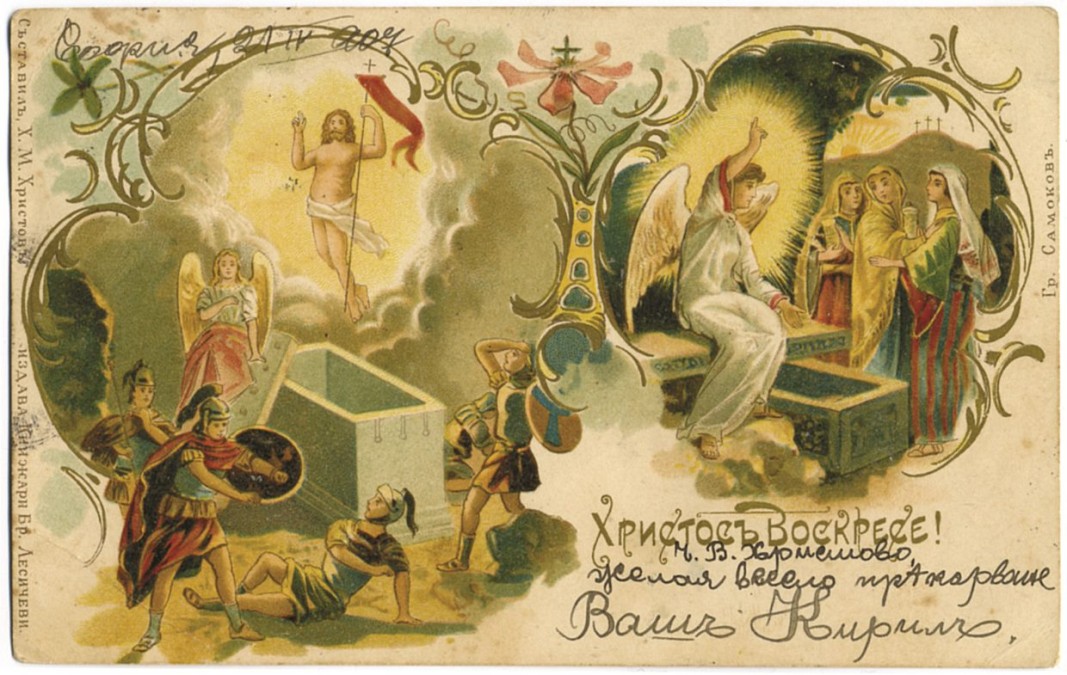 4
4
What were known as “open” postcards appeared in Western Europe in the 1860s – postcards without an envelope, with the addresses of the recipient and of the sender on the one side and text on the flipside – the forerunners of the greeting cards. After a certain hesitation connected with the fact that anyone could read what was written on them, they grew very popular, with Bulgaria becoming one of the first countries in Europe allowing the making and sending of postcards.

Bulgarian postcards of this kind first appeared right after the country’s liberation – in 1879, with the familiar holiday greeting cards appearing a little later. Unfortunately, the fact there is absolutely no interest in them has so far rendered their study and collection impossible.
“There is not a single state-owned collection in Bulgaria, there might be collectors who have such collections but there is no access to them,” explains Dr. Petar Velichkov, literary historian, journalist and poet who is the first person to have collected, in one book, magnificent examples of Easter and spring postcards from Bulgaria. “In the whole world, and in Bulgaria, this kind of greeting card was sent to bring joy to the person receiving it, and then it was usually thrown away. But as they were also considered a fond memory, many of these cards were kept as a keepsake and have thus come down to us.”

The first Bulgarian Easter card in his collection is from 1898. It is a colour lithograph of a scene from the Resurrection of Christ in a series of pictures. On the front of the postcard are the words “Christ is risen!”, and it was printed in the town of Samokov.

In the deluxe and fullest, to date, edition “Easter and spring greeting cards from the Third Bulgarian Kingdom” (1878-1946), most of the postcards shown are from Western Europe, mostly Germany, which was then top of the list of countries in terms of production, quality and sales. Around the year 1910, Bulgarian booksellers and vendors of illustrated Easter postcards started commissioning prints especially for Bulgaria, with inscriptions in Bulgarian. Throughout this period the greeting cards were coloured, and featured specific scenes with children, Easter bunnies, red eggs, chicks, hens, lambs, flowers. Very few had religious scenes connected with the Crucifixion or Resurrection of Jesus Christ.

In the 1920s and 1930s, however, children’s magazines and books appeared in Bulgaria, illustrated by foremost Bulgarian artists such as Vadim Lazarkevich, Ilia Beshkov, Georgi Atanasov etc. It was this interest in children’s illustrations that triggered such a boom of original Bulgarian Easter and spring greeting cards.

“I started collecting these postcards mostly because of the Bulgarian element in their history,” says Dr. Petar Velichkov in an interview with Radio Bulgaria’s Desislava Semkovska. “The Bulgarian artists introduced a great many new elements from folklore, from ethnography, the colours are much fresher and they were much better crafted. So it is no coincidence that Bulgarian postcards became exceedingly popular, even more popular than West European postcards.”

In the period after the communist coup of 1944 (and up until 1989) religion was prohibited, and Christmas and Easter frowned upon, so these postcards went “underground”. Many artists would draw the same scene by hand 50-100 times over, the cards were sold on the black market or gifted to friends.

“That is a period in the history of the Easter postcards that it is difficult to reconstruct, even though after 1989 many of them were brought out into the open and reached the antiquities market,” Dr. Velichkov says. “I hope one day there will be young people who will turn their attention to these greeting cards and make an in-depth study of them.”
Translated from the Bulgarian and posted by Milena Daynova
Photos courtesy of Iztok-Zapad publishing house
The week of Bulgarian documentary cinema for art and creators "Doc-Art-Fest" will take place in Berlin from October 31 to November 6 this year. "Talent has no nationality, but its roots matter - it draws strength from them and returns to them,..
On October 27 and 28, 2024, Berlin will host an international conference under the title "Bulgarian studies in the field of modern humanitarian studies". The forum will bring together prominent scientists, teachers and artists from Bulgaria and Germany...
The documentary film The Spiritual Mirror of Christian Nessebar produced by the Bulgarian National Television has received a total of four awards at three prestigious international film festivals in Brazil, Georgia and Portugal. The..
The Gala Concert of the National Ballet of El Salvador will take place today at 16.00 in the State Opera House in Stara Zagora as part of the..
After the success of the "We are the children of the river" festival in September, a civic foundation is once again collaborating with the Plovdiv..
“A story that is worthy of a movie” is what we often say when we hear about some incredible event or an interesting story. It is cinema..

+359 2 9336 661
